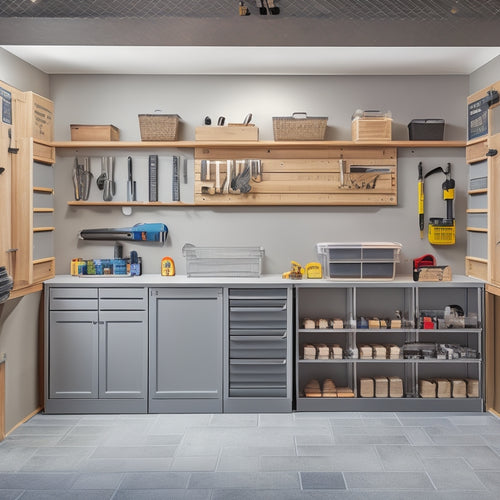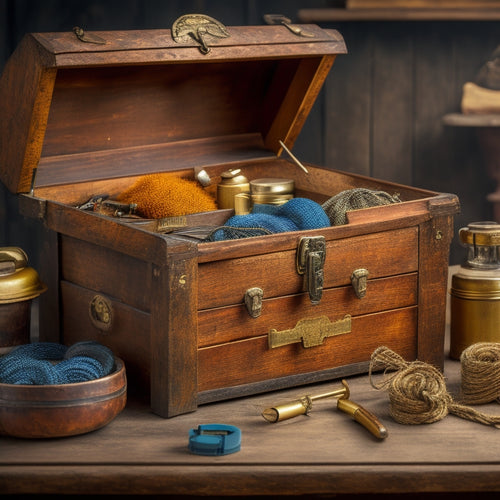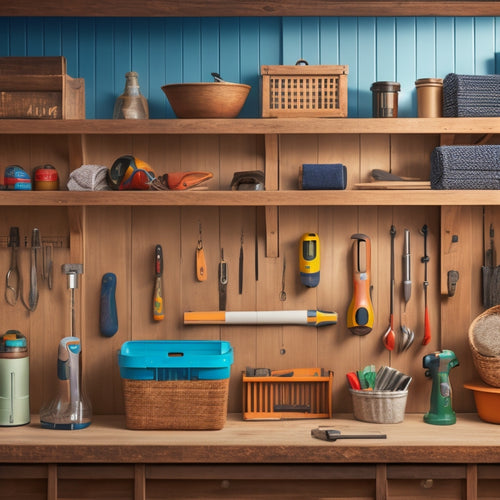
Enhancing Life Through Dexterity Assessments
Share
Dexterity assessments are essential for enhancing life quality by detecting areas for improvement, tracking progress, and informing personalized rehabilitation plans. By understanding dexterity intricacies, individuals can identify specific strengths and weaknesses, and develop targeted strategies to boost autonomy, confidence, and independence in daily activities. From simple tasks like buttoning a shirt to more complex activities like playing musical instruments, dexterity plays a crucial role. By recognizing the importance of dexterity assessments, individuals can take the first step towards regaining control over their daily lives and harnessing their full potential. Discover the full scope of dexterity assessments and their benefits.
Key Takeaways
• Dexterity assessments can identify areas for improvement, enabling individuals to enhance their overall quality of life and independence.
• By understanding dexterity intricacies, individuals can detect underlying neurological or musculoskeletal conditions, allowing for early intervention and treatment.
• Dexterity assessments aid in developing personalized rehabilitation plans, promoting fine motor skills and cognitive benefits.
• Timely interventions based on dexterity assessments can improve patient outcomes, enabling autonomy and participation in daily activities.
• Scientifically-backed dexterity assessments empower individuals to take control of their lives, enhancing well-being and regaining independence.
Understanding Dexterity and Its Impact
Every individual's ability to perform daily tasks, engage in recreational activities, and maintain independence is greatly influenced by their dexterity, which encompasses the coordinated use of fingers, hands, and arms.
Dexterity is essential for undertaking simple tasks, such as buttoning a shirt or tying shoelaces, to more complex activities like playing a musical instrument or participating in sports.
Exploring hand function and improving skills can greatly enhance one's overall quality of life. By understanding the intricacies of dexterity, individuals can identify areas for improvement, thereby boosting their autonomy and confidence.
Additionally, understanding dexterity can help in detecting underlying neurological or musculoskeletal conditions, allowing for early intervention and effective management.
Types of Dexterity Assessments
Evaluating dexterity through various tests and tools is essential for identifying areas of strength and weakness, as well as for developing targeted interventions to improve hand function and overall quality of life.
There are several assessment techniques used to evaluate dexterity, each with its own practical applications. The Nine-Hole Peg Test, Purdue Peg Board Test, Minnesota manual dexterity test, OConnor finger dexterity test, and Box and block test are some of the most commonly used assessments.
These tests help healthcare professionals identify specific areas of difficulty, track progress, and develop personalized rehabilitation plans. By understanding the different types of dexterity assessments, individuals can take a proactive approach to improving their hand function and enhancing their overall well-being.
Research Insights and Applications
Research has consistently shown that dexterity assessments are valuable tools in identifying early signs of neurological disorders and age-related functional decline, allowing for timely interventions and improved patient outcomes.
The clinical implications of these assessments are far-reaching, with practical applications in rehabilitation planning, brain damage evaluation, and identifying neurologically based learning disabilities.
Moreover, dexterity assessments have cognitive benefits, promoting skill development and fine motor skills. By leveraging these assessments, healthcare professionals can develop targeted interventions to enhance patient function and independence.
Ultimately, the insights gained from dexterity assessments can greatly enhance life quality, enabling individuals to maintain their autonomy and participate fully in daily activities.
Valuable Resources for Assessment
A wealth of valuable resources is available to healthcare professionals seeking to incorporate dexterity assessments into their practice, including online platforms, rehabilitation centers, and physical therapists. These resources provide access to various assessment tools and evaluation techniques, enabling professionals to tailor their approach to individual patient needs.
| Resource | Description |
|---|---|
| Online Platforms | Videos demonstrating different dexterity tests, tutorials on administration and scoring |
| Rehabilitation Centers | Trained staff, specialized equipment, and guidance on test selection |
| Physical Therapists | Expertise in dexterity assessment, treatment planning, and patient education |
| Books and Articles | In-depth information on dexterity testing, research findings, and clinical applications |
| Professional Associations | Networking opportunities, conferences, and continuing education resources |
Scientific Backing and Evidence
The availability of valuable resources for dexterity assessments is complemented by a strong scientific foundation, with numerous studies providing evidence on the validity and reliability of these tests in various clinical settings.
This evidence-based backing underscores the clinical significance of dexterity assessments in identifying and addressing motor skill deficits. Research has consistently demonstrated the evidence-based benefits of dexterity tests in diagnosing and monitoring neurodegenerative diseases, such as multiple sclerosis and schizophrenia.
Additionally, these tests have been shown to aid in early detection of age-related functional decline and predict cognitive decline. By leveraging these scientifically-backed assessments, healthcare professionals can develop targeted interventions, empowering individuals to regain control over their daily lives and enhance their overall well-being.
Frequently Asked Questions
Can Dexterity Tests Be Adapted for Individuals With Physical Disabilities?
"Dexterity tests can be adapted for individuals with physical disabilities through inclusive design and adaptive technology, ensuring accessibility and equal opportunities for assessment, thereby promoting empowerment and autonomy in rehabilitation and daily life."
How Often Should Dexterity Assessments Be Conducted for Optimal Results?
Interestingly, ideal dexterity assessment frequency remains a mystery, but research suggests a frequency threshold of 3-6 months for monitoring progress, with tailored assessment schedules allowing for personalized tracking and effective intervention planning.
Are There Any Age Restrictions for Administering Dexterity Tests?
When considering dexterity tests, age limits vary; some tests are designed for pediatric populations, while others are suitable for adults. However, legal implications arise when testing vulnerable populations, such as minors or individuals with cognitive impairments, emphasizing the need for informed consent and ethical considerations.
Can Dexterity Tests Be Used to Identify Underlying Medical Conditions?
Can subtle hand movements reveal hidden health secrets? Yes, dexterity tests can identify underlying medical conditions, facilitating early detection of silent symptoms, such as neurodegenerative diseases, schizophrenia, and age-related functional decline, enabling timely interventions and improved outcomes.
Are Dexterity Assessments Only Useful for Rehabilitation and Medical Purposes?
Dexterity assessments extend beyond rehabilitation and medical purposes, offering occupational benefits by identifying areas for performance optimization, enhancing overall work efficiency, and improving daily functioning, ultimately leading to increased productivity and independence.
Related Posts
-

Essential Steps for Garage Storage System Design
You're about to change your cluttered garage into an organized haven by following a structured approach to garage sto...
-

What Are the Advantages of a Wooden Tool Box
You choose a wooden tool box, you're not only getting a reliable storage solution, but also a long list of benefits t...
-

What Tools Do I Need for a DIY Wall Organizer
You'll need a variety of tools to complete a DIY wall organizer project. Essential measuring tools include a tape mea...


